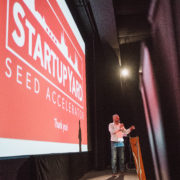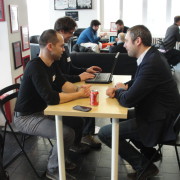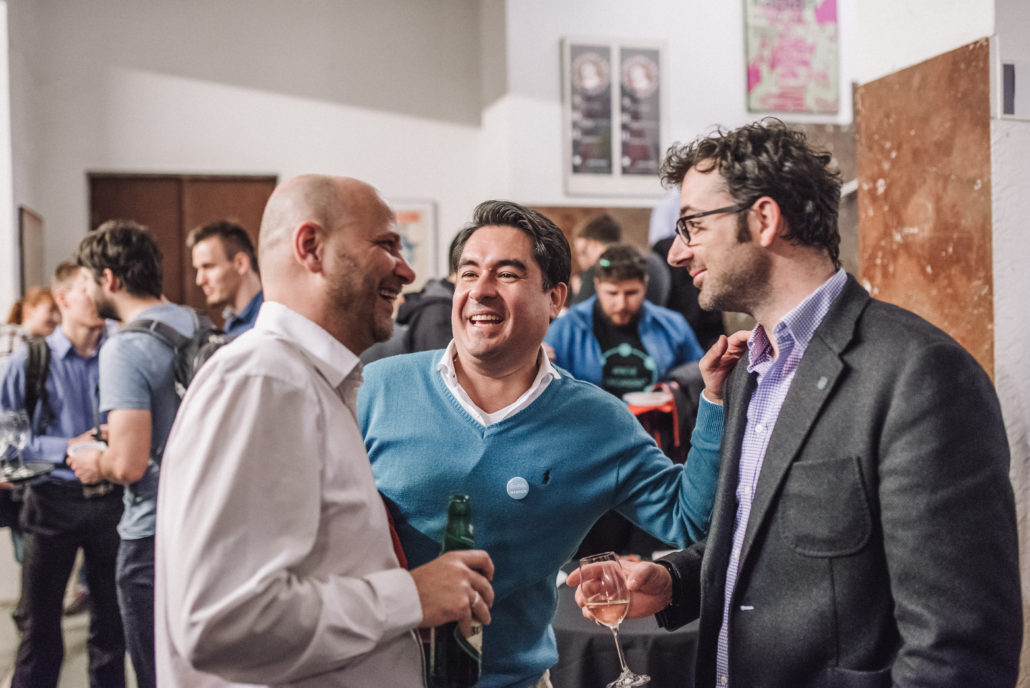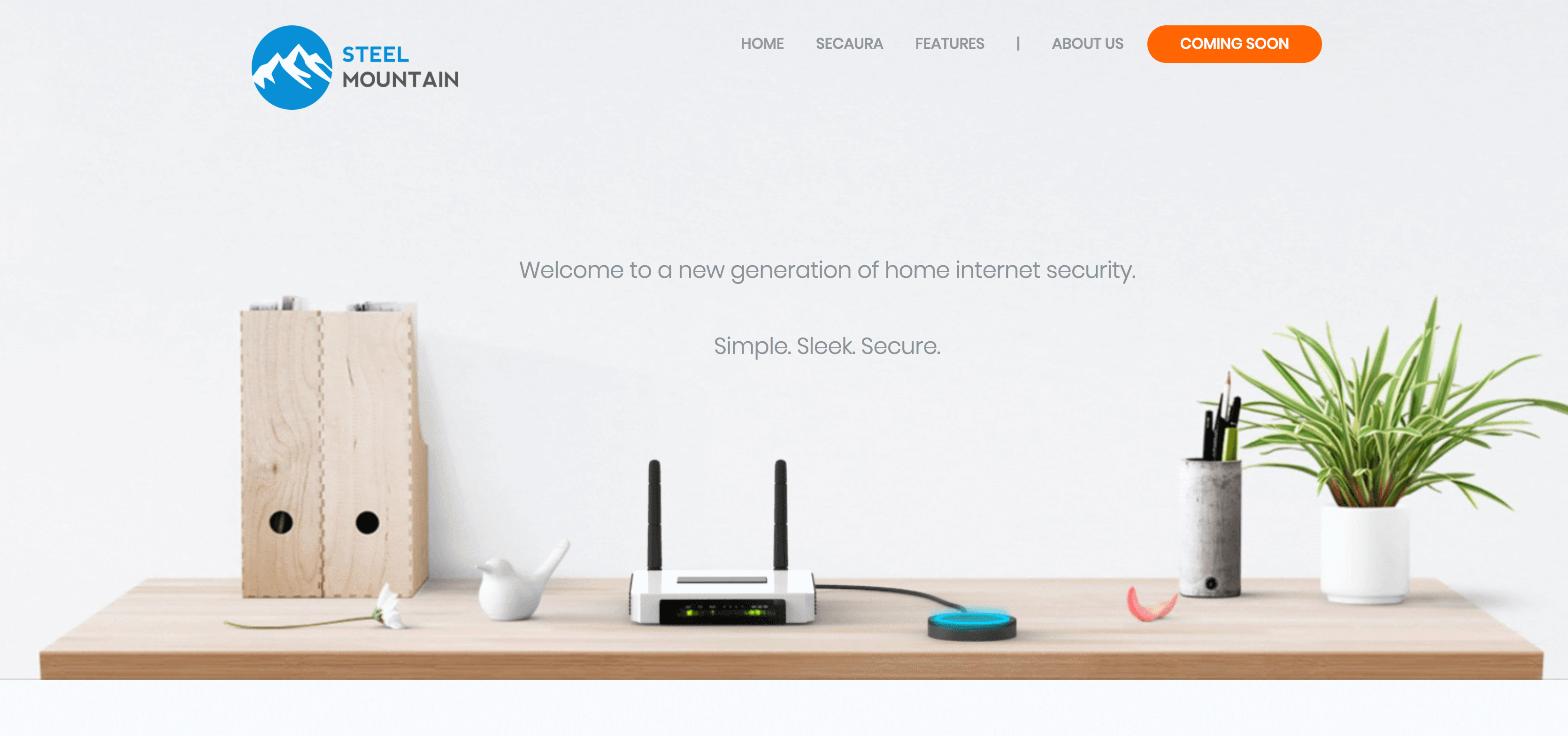An Investor Deck Isn’t a Pitch
You know that pitching is one cornerstone of building a startup. It’s an art form: condensing your business and your story into something people can understand, and remember, in just minutes. While most startups are familiar with the idea, and some can present well, delivering a really standout pitch remains a high bar of achievement for most founders.
Despite the fact that pitching is such a common cultural phenomenon in startupland, the majority of startups never do it well, in my view. There’s a reason StartupYard spends a whole month toward the end of our program on pitching, and there’s a reason many of our alumni have won pitching contests after the program.
The key, as in most thing, is preparation: mental, physical, and organizational. We’ll focus here on that last point: organization.
The Pitch Deck
In order to pitch, you need a killer Pitch Deck. That being said, at StartupYard we sense a good amount of confusion over exactly what a “Pitch Deck” is, and especially what makes it different from, say an “Investor Deck,” or a “Business Plan,” or a “Teaser,” or the 101 similar things that startup gurus insist you need to have.
Most of the time, when you contact an investor who’s interested in your startup, they’ll ask you for your “pitch deck.” That only adds to the confusion, because what they usually mean is your “Investor Deck,” “One-Pager,” or “Teaser.”
Then again you may be asked to present your pitch in front of a more general audience, such as potential investors, partners, other startups, or even employees, and in that situation, an Investor Deck is the wrong material to present.
When we’re finally meeting our applicants for the first time in our final selection round at StartupYard, we ask them to provide a pitch for our investors, team, mentors, and partners. What we frequently get from startups is not exactly a pitch, but rather a presentation of an Investor Deck.
So how do you know what to present, and when? Why can’t you just show everyone the same thing?
Investor Deck ≠ Pitch Deck
For starters, despite what investors may say, the “Pitch Deck” they might ask you to send them via email is actually an Investor Deck.
Just to make this as fool-proof as possible, here are the key differences:
General Pitch Deck
- Supports your in-person presentation
- Focuses on problem, unique value proposition, and differentiation from competition
- Introduces the market opportunity, team, and future plans
- Tells your story and vision in simple human terms
- Slides contain only very basic info
- For an audience with no prior information
Investor Deck
- Can be read by itself
- Introduces the problem and covers the key value proposition
- Focuses on the market opportunity and unfair advantage of the startup
- Focuses on the team and their relevant qualifications
- Discusses go-to-market strategy in detail
- Talks about your vision in mostly business terms
- For an audience with prior information
We can see from this breakdown that the investor deck puts most of its focus on the information investors need to make decisions. While an investor may be deciding “should I invest in this?” a general audience member is asking “should I care about this at all?”
A common problem occurs with early stage companies when founders create their Investor Deck before doing a Pitch Deck, and end up “converting” their Investor Deck into something they will use to pitch their startup to general audiences.
This is a mistake! It’s kind of like converting a Formula 1 car to a family van. These aren’t the same species. The two types of deck are meant for completely different contexts, and they are easy to tell apart. What might seem impressive in an investor deck can seem grandiose or unrealistic in a pitch deck.
Take a look at the 500 Startups Template for an Investor Deck:
As you can see, if you start with an Investor Deck and try to convert that into a general pitch, you’ll end up with a presentation that has too much data focusing on the wrong things. Whereas an Investor Deck argues in favor of an investment in your company, the Pitch Deck argues in favor of the existence of your company. If you start backwards, you’ll end up with all the wrong data, and all the wrong messages.
More importantly, you will miss narrative opportunities that are only available when you pitch in person. A pitch is all about salesmanship, so why would you undercut your opportunity to sell yourself to the audience?
Focusing on Your Audience
The key to getting any kind of pitch right is to know your audience, and do the heavy lifting for them. Ask yourself the key questions:
– What does my audience need to know?
– What misconceptions do I want to correct?
– What impression do I want to make?
– What do I want them to do after hearing the pitch?
– What questions do I want to be asked?
The answers are obviously very different if you’re talking about an investor you have met, or someone in a general audience hearing your pitch for the first time. Giving that information without the right context makes you look like a fool, and wastes your audience’s time to boot.
Failing to focus on your audience can cause you to lose control of the impression you’re making. What seems fine in front of investors, or in an email, can seem greedy and/or totally unrealistic in front of a mixed group of people who know little about you. Founders who are probably nice people can end up seeming sinister or assholish because they’ve forgotten where they are.
On the flip side, what can seem cute or fun in front of a larger audience can seem childish to a small group of experts. Funny is contextual. Fun is subjective.
I’ve seen this kind of thing happen in person. Once, I was in the audience of a pitch where the founder completely lost control of the impression he was making. He was presenting a really complicated and in-depth Investor Deck to a general tech audience. He was making pretty unbelievable claims about the opportunity he was attacking as well. Maybe they were justified in his mind, but they were not justified in his pitch.
That might be fine for an investor deck because investors can ask about the assumptions being made. A crowd of people doesn’t get to stop you: they have to listen with mounting disbelief.
Even for a group of really smart and informed people, an out-of-place pitch gets tiresome fast. By the time the Q/A started on that occasion, snarky and hostile questions were bubbling up on the audience feedback screen behind him. Having started off badly, the founder got defensive with his answers, and people ended up actually booing him at the end.
I’ve never seen that at a pitch session before or since, but I understand why it happened. He didn’t respect his audience by showing he understood them. He talked down to them, rather than treating them as the focus of his pitch. That was his unforgivable mistake.
Saying What’s Important
The impression you give is as much how you make your audience feel, as how you talk about yourself and what you do. It’s important to stick to saying what’s most important, and not necessarily what’s most impressive or “complicated sounding.”
Keep in mind: if they wanted to become experts on the topic, they could read a book. A general audience are there mainly to learn about you, not the market you’re in or the technology you’re working on. They should come away knowing more about you and the way you think, even if they don’t really understand what you do yet. If they learn something about technology in the process, consider it a plus.
Building trust is all about being appropriate to your context; showing your audience that you are prepared for them, and they can trust you. This is why we advocate for a simple Pitch Deck, particularly for a 2-minute pitch (made famous by Techstars). The rule of thumb should go something like this:
- Killer intro / 30 sec, 50 words
- Problem / 20 sec, 33 words
- Solution / 20 sec, 33 words
- Differentiation / 10 sec, 16 words
- Business model & go-to-market / 20 sec, 33 words
- Traction / 20 sec, 33 words
The concrete number of slides you use is not as important as most founders think, particularly for a live pitch. A slide can be one word for example, or one image. One slide can be your whole intro, or your intro can be five slides. That’s down to individual style.
In his Medium post: Why You Shouldn’t Copy Sequoia’s Pitch Deck, Scott Sage makes a nice point, saying that the headline of each slide should, in sequence, tell the story of your company. While he’s really talking about Investor Decks, this theory still fits nicely with StartupYard’s own “Maximum One Idea Per Slide” rule for Pitch Decks.
Simply put: don’t force your general audience to process two thoughts at the same time. That means a slide or series of slides supports one idea, not that multiple ideas are supported by a single slide. Consider what that means for a general audience pitch deck: the slides have to be very basic.
If you adhere to the KISS principle (Keep It Simple Stupid), then your pitch should only try to accomplish a very limited set of goals.
Communicate Your Message, Not Your Data
Now, if your pitch is shooting for these simple goals, it should be conservative with the amount of work it asks the audience to do. Do you need your audience reading in-depth market data if all you want to do is state that an opportunity exists? Do you need to deep dive into the unique background of your team members to show that you are suited to this project as a group?
The answer is probably not. In fact, it’s usually better to leave those details for a follow-up meeting, where anyone interested will likely ask about them or challenge what you’ve said. Don’t be defensive about your ideas from the start – allow people the chance to question you, and welcome those questions.
The best live pitches are built around developing questions for the audience to be curious about. It’s impossible to convince someone in 5 minutes, but it is very possible to intrigue them in that time.
The effectiveness of a general audience pitch is going to be determined not by how much your audience understands, but rather by if they care. An investor usually only looks at your Investor Deck because they care to begin with. You can play into that interest and take the time to inform and enlighten the investor- but that is fundamentally a differently thing from getting someone excited about you and your idea itself.
Remember, an Investor Deck answers questions, but a Pitch Deck provokes new questions. You want to give your audience the space and in a way the mystery needed to inspire their imagination. A pitch that is grounded in things like market size and opportunity, or even in-depth data on the problem itself, is not asking its audience to dream about the future – it is asking them to study the present with a clinical eye.























